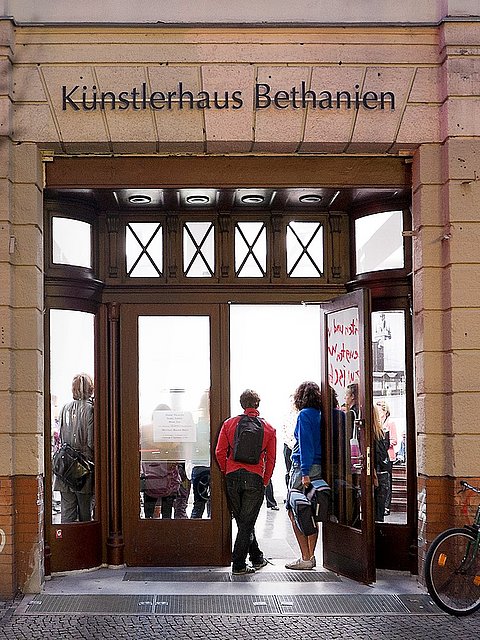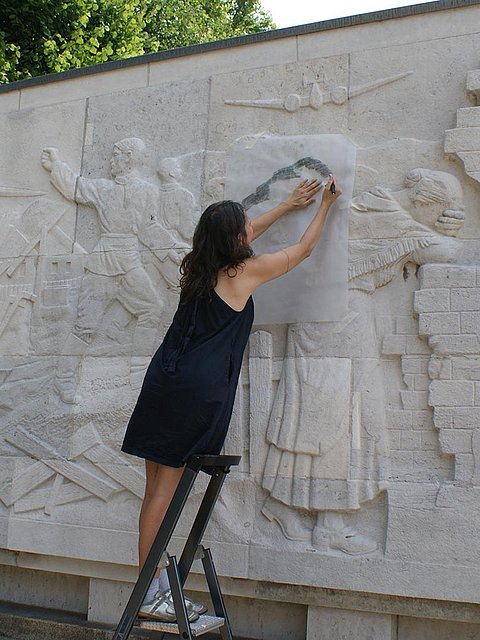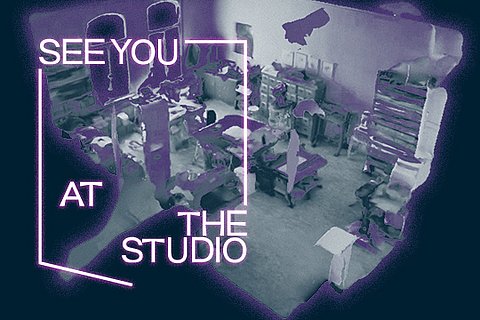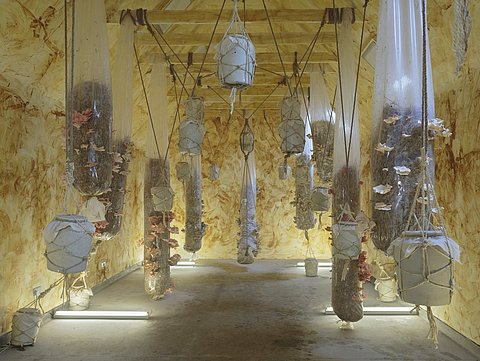Artists in Residence
KfW Stiftung runs an artists-in-residence programme in collaboration with Künstlerhaus Bethanien Berlin, offering up-and-coming artists from Latin America, Africa, the Middle East and Asia the opportunity to stay in Berlin for twelve months.
Ausstellung im Künstlerhaus Bethanien Berlin
Partner
Villa 102
The programme aims to stimulate art production, experiments and critical reflection as well as to encourage exchange among people working in arts and culture. The infrastructure and the international environment of Künstlerhaus Bethanien provide a platform for this purpose. The artists-in-residence programme facilitates international networking and addresses the need to challenge geographic and cultural impacts, which in turn leads to new ways of thinking and working. Each grant holder is honoured with an exhibition at Künstlerhaus Bethanien and a catalogue.




Exhibition at Künstlerhaus Bethanien Berlin
02. November - 17. December 2023
Künstlerhaus Bethanien, Kottbusser Straße 10, 10999, Berlin
An exhibition by KfW Stiftung in cooperation with Künstlerhaus Bethanien.
Further information here.
Grant Holders
2021/22: Aziz Hazara (Afghanistan), Gaëlle Choisne (France)
2020/21: Hamlet Lavastida (Cuba), Daniel Lie (Brazil)
2019/20: Talya Lubinsky (South Africa), Gladys Kalichini (South Africa)
2018/19: Elia Nurvista (Indonesia), Andrés Pereira Paz (Bolivia)
2017/18: Vartan Avakian (Lebanon), Ahmed Ghoneimy (Egypt)
2016/17: Orawan Arunrak (Thailand), Matheus Rocha Pitta (Brazil)
2015/16: Salwa Aleryani (Yemen), Nguyễn Thị Thanh Mai (Vietnam)
2014/15: Khvay Samnang (Cambodia), Stary Mwaba (Zambia)
2014: Prajakta Potnis (India), Regina José Galindo (Guatemala)
2013/14: Carla Zaccagnini (Argentina/Brazil), Thabiso Sekgala (South Africa)

Selection Procedure
Internationally renowned curators, critics and artists working in different regions of Africa, Asia, Latin America and the Middle East nominate aspiring young artists. Direct applications are not accepted. A jury of experts decides on the submitted entries.
Jury 2021/22: Mahret Ifeoma Kupka (Museum Angewandte Kunst Frankfurt), Willem de Rooij (Artist, Professor Städelschule), Daniela Leykam (KfW Stiftung), Christoph Tannert (Künstlerhaus Bethanien Berlin).
Jury 2020/21: Melanie Roumigière (Head of Visual Arts Department at Berliner Künstlerprogramm des DAAD), Jan Verwoert (Art Critice and Cultural Scientist, Berlin), Daniela Leykam (KfW Stiftung), Christoph Tannert (Künstlerhaus Bethanien Berlin).
Jury 2019/20: Malina Lauterbach (Curator, Berlin), Kwasi Ohene-Ayeh (Artist/Curator, Accra/Ghana), Dr. Nicola Müllerschön (KfW Stiftung), Christoph Tannert (Künstlerhaus Bethanien Berlin).
Jury 2018/19: Dr. Yvette Mutumba (Contemporary And (C&), Berlin), Sophie Potelon (Kadist Art Foundation, Paris), Malina Lauterbach (KfW Stiftung), Christoph Tannert (Künstlerhaus Bethanien Berlin).
Jury 2017/18: David Elliott (Curator, Berlin), Dr. Yvette Mutumba (Weltkulturen Museum, Frankfurt/Main), Dr. Marie-Hélène Gutberlet (KfW Stiftung), Christoph Tannert (Künstlerhaus Bethanien Berlin).
Jury 2015/16 & 2016/17: Peter Gorschlüter (Museum für Moderne Kunst, Frankfurt on Main) Dr. Matthias Mühling (Städtische Galerie im Lenbachhaus, Munich), Dr. Nicola Müllerschön (KfW Stiftung), Christoph Tannert (Künstlerhaus Bethanien Berlin).
Jury 2013/14 & 2014/15: Ariane Beyn (Berliner Künstlerprogramm des DAAD), Anselm Franke (Haus der Kulturen der Welt, Berlin), Dr. Nicola Müllerschön (KfW Stiftung), Christoph Tannert (Künstlerhaus Bethanien Berlin).

Daniel Lie, Quing, 2019, Installation Photo courtesy Ruth Clarks
Partner
The Künstlerhaus Bethanien is an international cultural centre in Berlin. An artist-in-residence programme with workspaces for professional artists and exhibition spaces, it is dedicated to the advancement of contemporary visual arts. As part of its residency scheme, it aims to establish a lively dialogue between artists from various backgrounds and disciplines, and the public at large.
To achieve these goals, the Künstlerhaus Bethanien organises a wide range of events ranging from monthly exhibition openings to private and public studio visits (“Open Studios”). The focus of its manifold missions is the International Studio Programme, where artists from around the world conceive and present new projects with the help of its team. The Künstlerhaus Bethanien continually strives to expand its international network by securing new partnerships.
Continue to Künstlerhaus Bethanien.
Programme Management
Daniela Leykam
Photo credits:
01. Image: Source: Künstlerhaus Bethanien, Author / Photographer: Georg Schroeder
02. Image: Source: Künstlerhaus Bethanien, Author / Photographer: Georg Schroeder
03. Image: Source: Carla Zaccagnini, Author / Photographer: Runo Lagomarsino und die Künstlerin
04. Image: Note on the artwork/artist can be found directly below the picture
05. Image: Note on the artwork/artist can be found directly below the picture